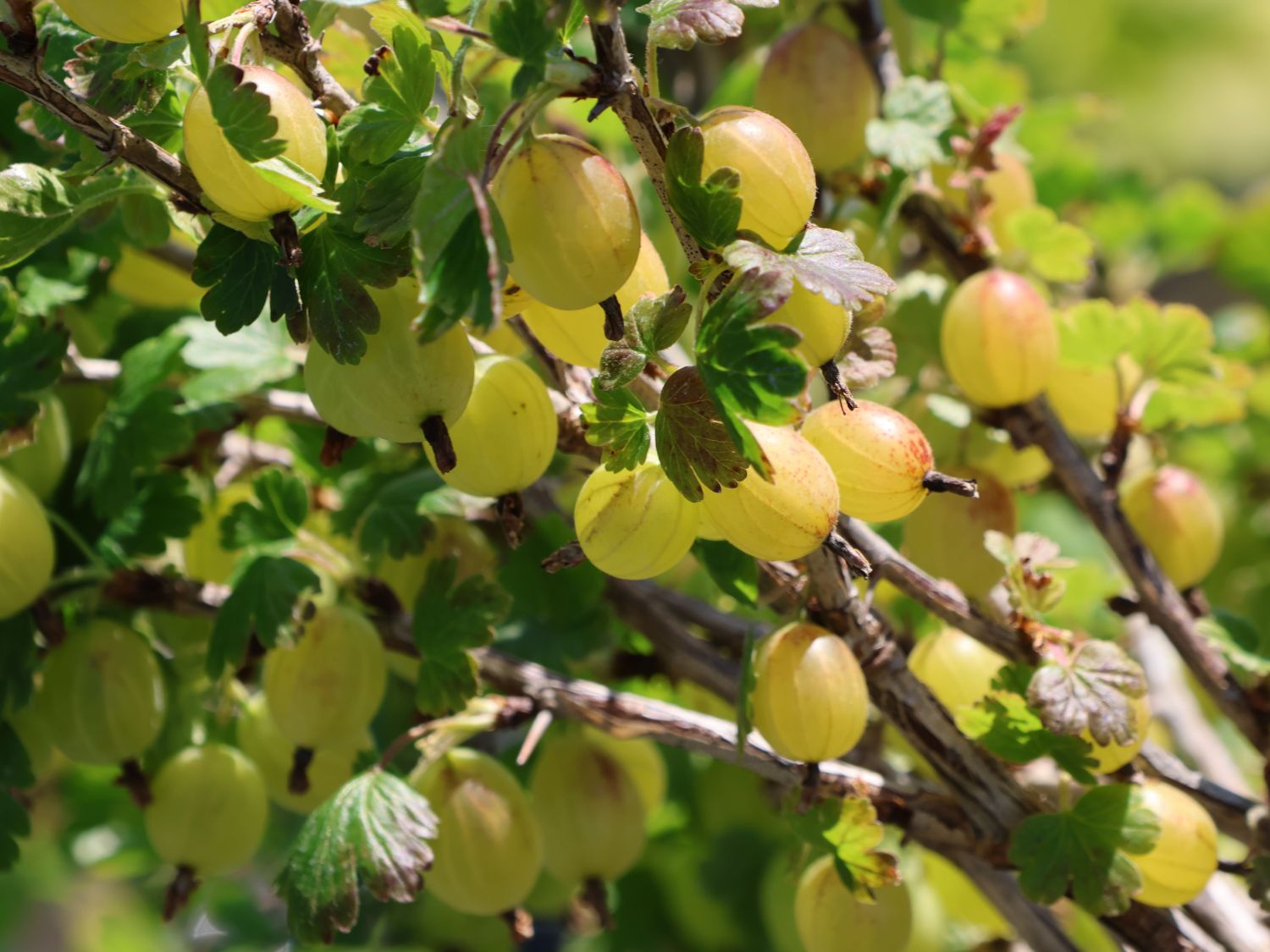
Stachelbeere 'Hinnonmäki gelb' Ribes uvacrispa 'Hinnonmäki gelb' Baumschule Horstmann
Gooseberry, European gooseberry Ribes uva-crispa native habitat is Woods and hedges, often by streams. Edible Uses. Fruit - raw or cooked. The fruit is often picked when under-ripe and very firm, it has a very tart flavour at this time and is mainly used in making pies, jams etc. However, if the fruit is allowed to remain on the plant until it.
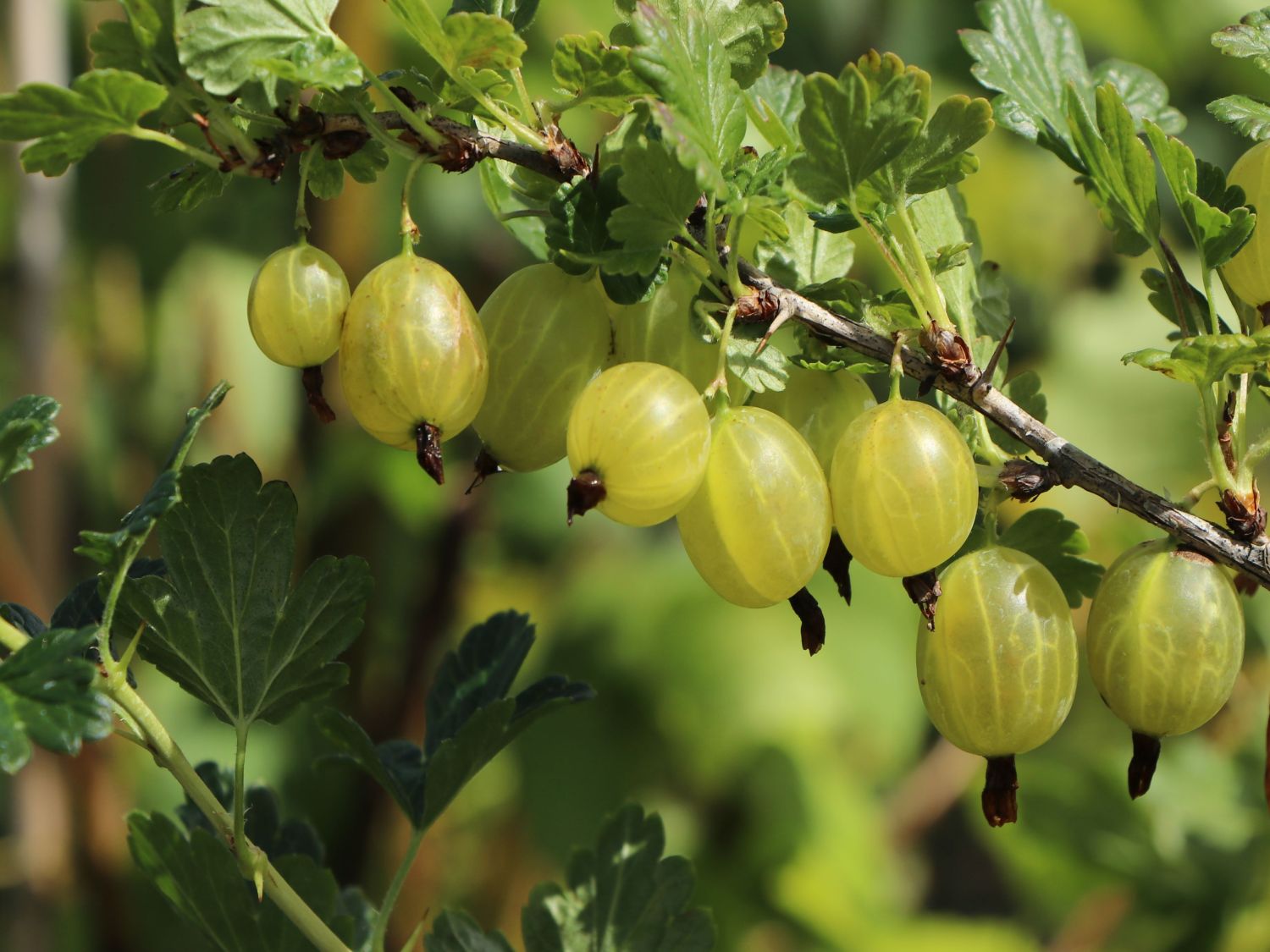
Stachelbeere 'Invicta' hellgrün Ribes uvacrispa 'Invicta' Baumschule Horstmann
Genus description. Ribes can be deciduous or evergreen shrubs, sometimes spiny, with simple, usually palmately lobed leaves and small tubular or bell-shaped, solitary or racemose flowers borne in spring or summer, followed by juicy, sometimes edible berries. Name status. Trade. Advertise here. Find help & information on Ribes uva-crispa Xenia.

Ribes uvacrispa 'Pax' BBC Gardeners World Magazine
Gooseberries of American origin are Ribes hirtellum or hybrids derived from this species, while the European species is Ribes uva-crispa. Gooseberries are self-fertile, so you will grow plenty of fruit with just one plant. Gooseberries have translucent skin. Depending on the variety, it might be light green, pink, or even red when ripe..
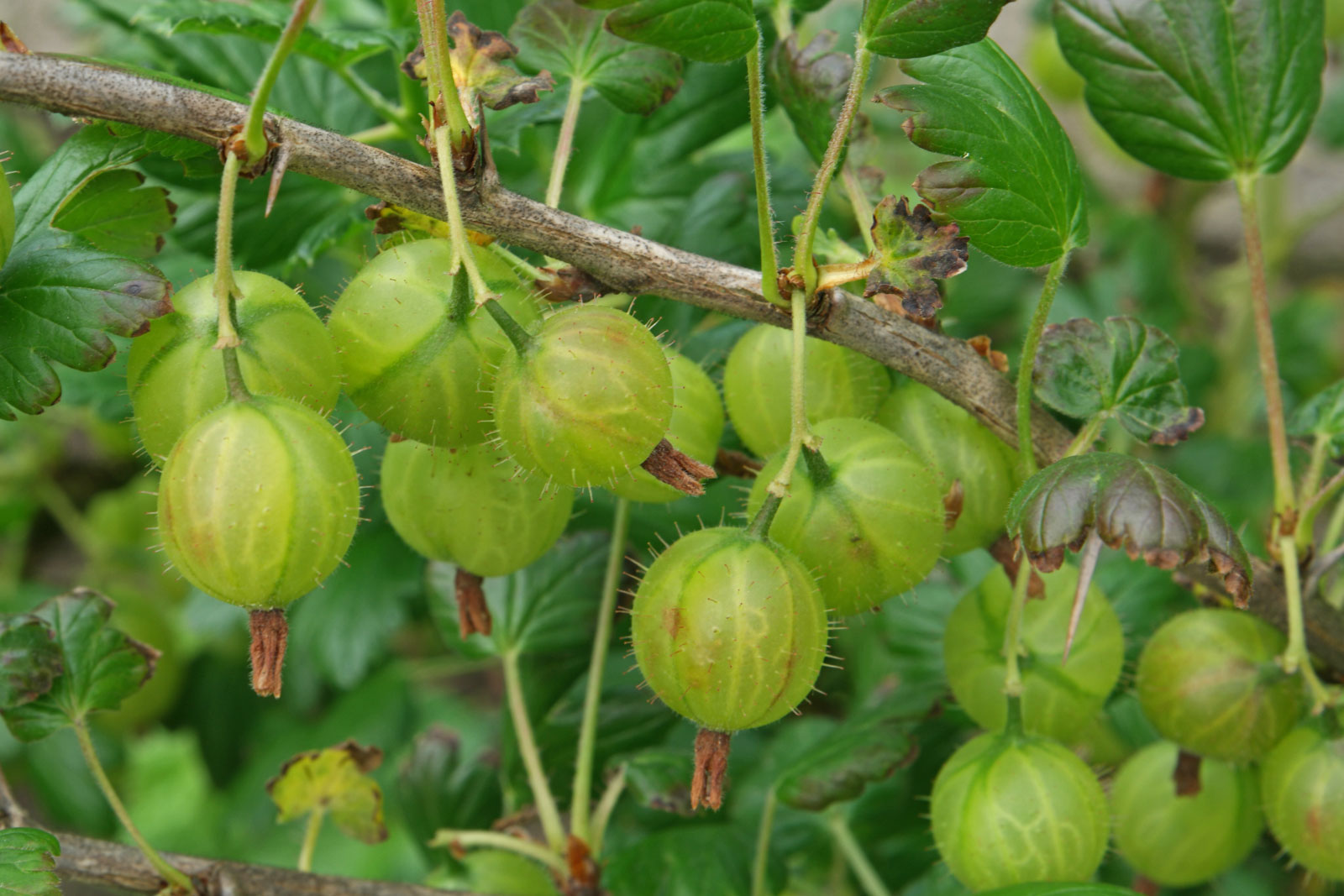
Ribes uvacrispa
A law introduced in 1926 and still in effect in some US states prohibits the cultivation of members of the Ribes genus, which includes gooseberries as well as black, red, and white currants because of white pine blister rust. How to Plant Gooseberries Nurseries usually sell gooseberries as bare root plants for early spring planting.

Ribes uvacrispa 'Captivator' Kruisbes Vertrouwd online kopen!
Ribes uva-crispa is a deciduous Shrub growing to 1.2 m (4ft) by 1 m (3ft 3in) at a medium rate. See above for USDA hardiness. It is hardy to UK zone 5 and is not frost tender. It is in flower from March to May, and the seeds ripen from July to September. The species is hermaphrodite (has both male and female organs) and is pollinated by Insects.
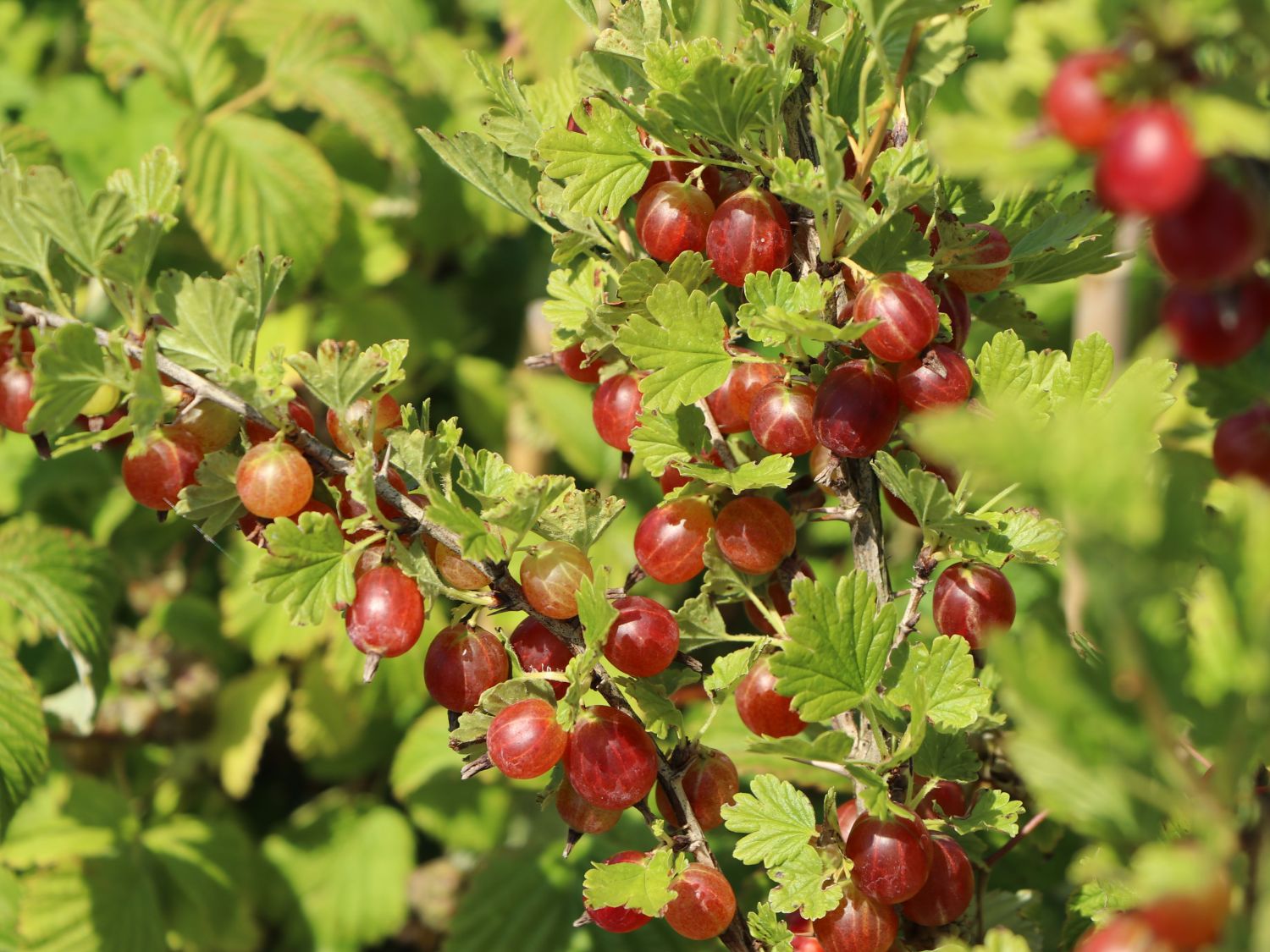
Stachelbeere 'Redeva' rot Ribes uvacrispa 'Redeva' rot Baumschule Horstmann
Red berries of Ribes uva-crispa Gooseberry ( / ˈɡuːsbɛri / GOOSS-berr-ee or / ˈɡuːzbɛri / GOOZ-berr-ee (American and northern British) or / ˈɡʊzbəri / GUUZ-bər-ee (southern British)) [1] is a common name for many species of Ribes (which also includes currants ), as well as a large number of plants of similar appearance.
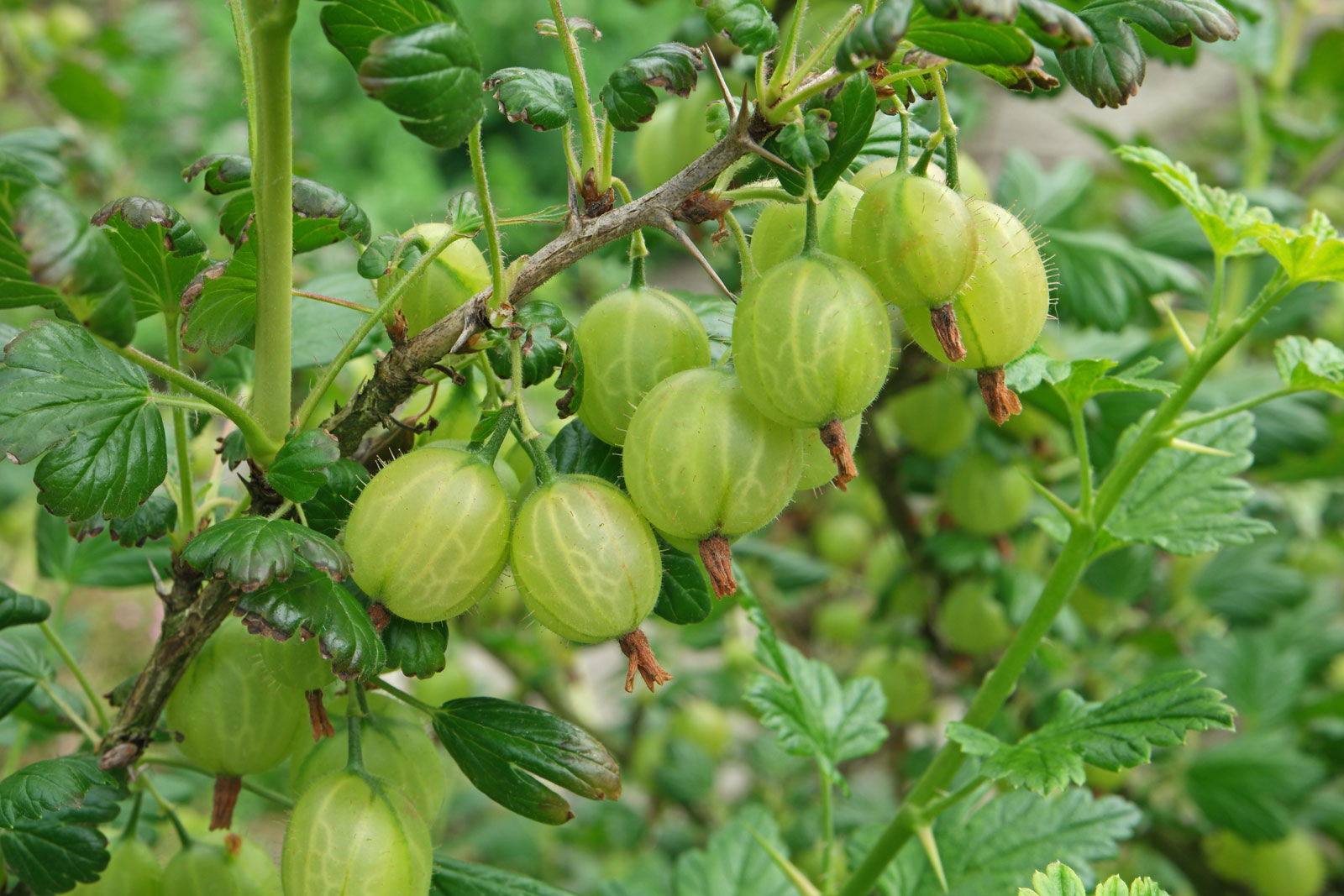
Ribes uvacrispa
Noted for its high yields, Ribes uva-crispa 'Pixwell' is a small, deciduous shrub that is vigorous and almost thornless. It boasts medium to large, tart, pink fruits which ripen in mid-summer. The gooseberries have a sweet flesh and contrasting tart skin. They are excellent for jam and desserts. This plant is self-fertile.
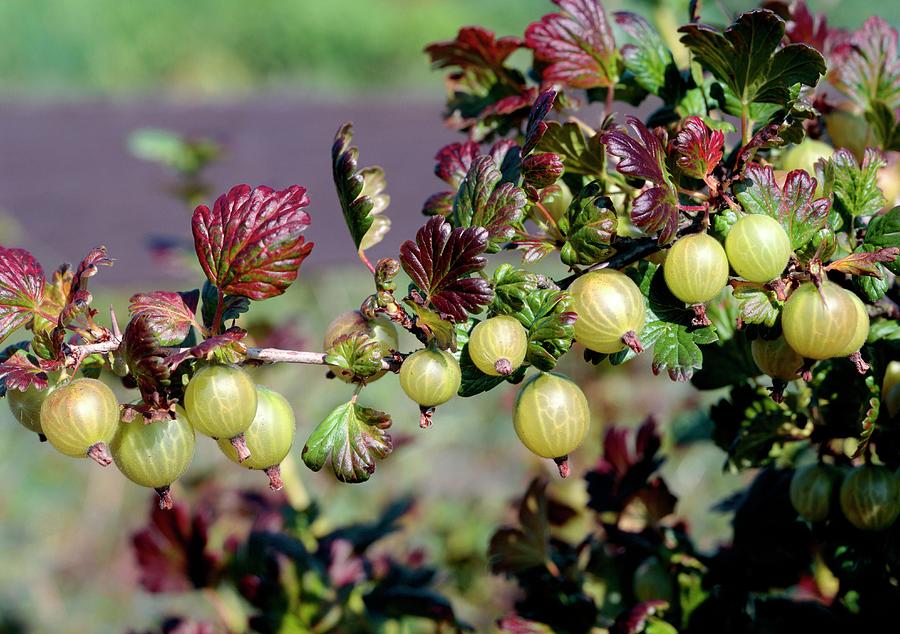
Ribes Uvacrispa Photograph by The Picture Store/science Photo Library Fine Art America
Ribes uva-crispa L. First published in Sp. Pl.: 201 (1753) This species is accepted The native range of this species is Europe, NW. Africa, NE. Türkiye to N. Iran. It is a shrub and grows primarily in the temperate biome. Taxonomy; Images; General information; Distribution.

Ribes uvacrispa Sistematica, Etimologia, Habitat, Coltivazione
Ribes uva-crispa gooseberry A bushy, woody plant with thorny stems and deeply lobed green leaves. Small insignificant yellow-green flowers are produced in spring followed by oval fruit which ripen in mid-summer and can be green, yellow, pink or red when mature.

Ribes uvacrispa var. reclinatum 'Whinham's Industry'
Dig a hole 60x60cm (2x2ft) and 30cm (1ft) deep. Add a layer of organic matter into the base of the hole and dig in. Place the roots of the gooseberry bush in the planting hole at the same depth as they were originally growing, so that the old soil mark is at soil level. Now mix in more soil improver to the soil and fill in the planting hole.
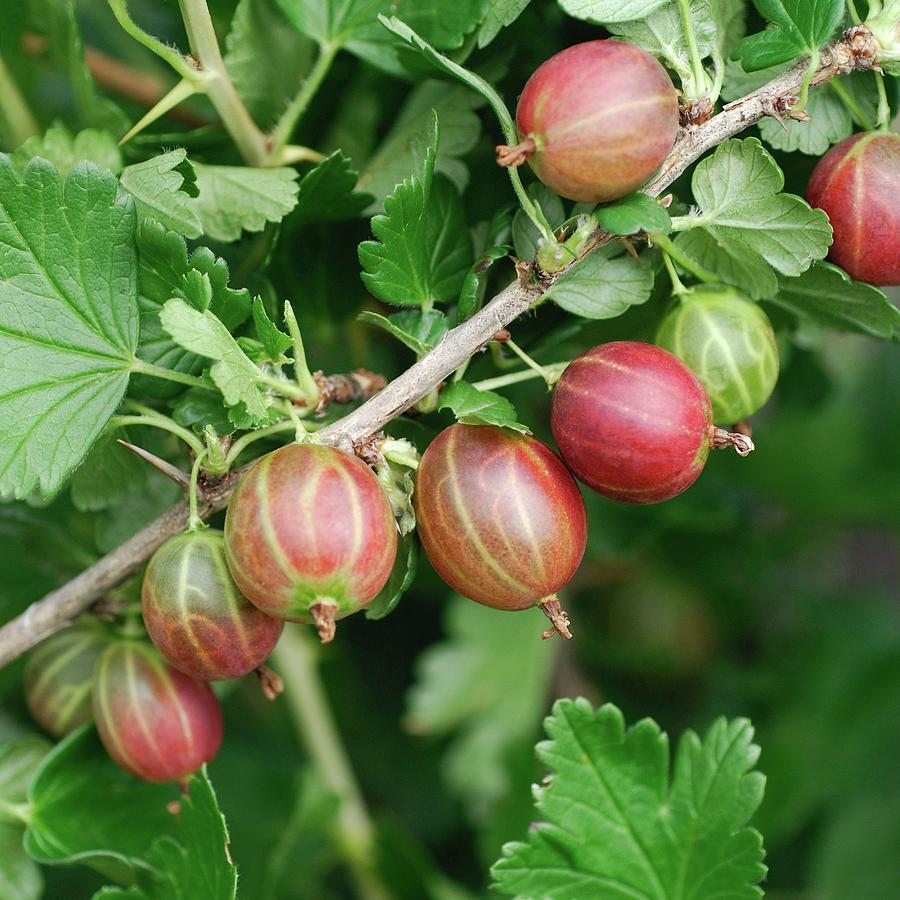
Gooseberry (ribes Uvacrispa 'redeva') Photograph by
Ribes uva-crispa GooseberryFruitFamily: Grossulariaceae Height: 1.5m Spread: 1.5m Hardy Foliage colour: Position Soil Gooseberries are a staple of the British cottage garden. They're easy to grow and can thrive in many kinds of soil, as long as they're grown in full sun. Grow them as compact bushes or train them against a wall.

Ribes uvacrispa 'Hinnonmaki Rod' 90 cm stam Rode Kruisbes Vertrouwd online kopen!
Grows up to 2-5 ft. tall (60-150 cm) and 3-6 ft. wide (90-180 cm). A full sun to part shade lover, this plant is easily grown in average, medium moisture, well-drained soils. Prefers full sun but appreciates some shade in hot summer areas. Site in a location protected from strong winter winds and frost pockets.

Ribes uvacrispa 'Invicta', Stachelbeere 'Invicta'
Ribes uva-crispa, known as gooseberry or European gooseberry, [2] is a species of flowering shrub in the currant family, Grossulariaceae. It is native to Europe, the Caucasus and northern Africa. [3] Gooseberry bushes produce an edible fruit and are grown on both a commercial and domestic basis.
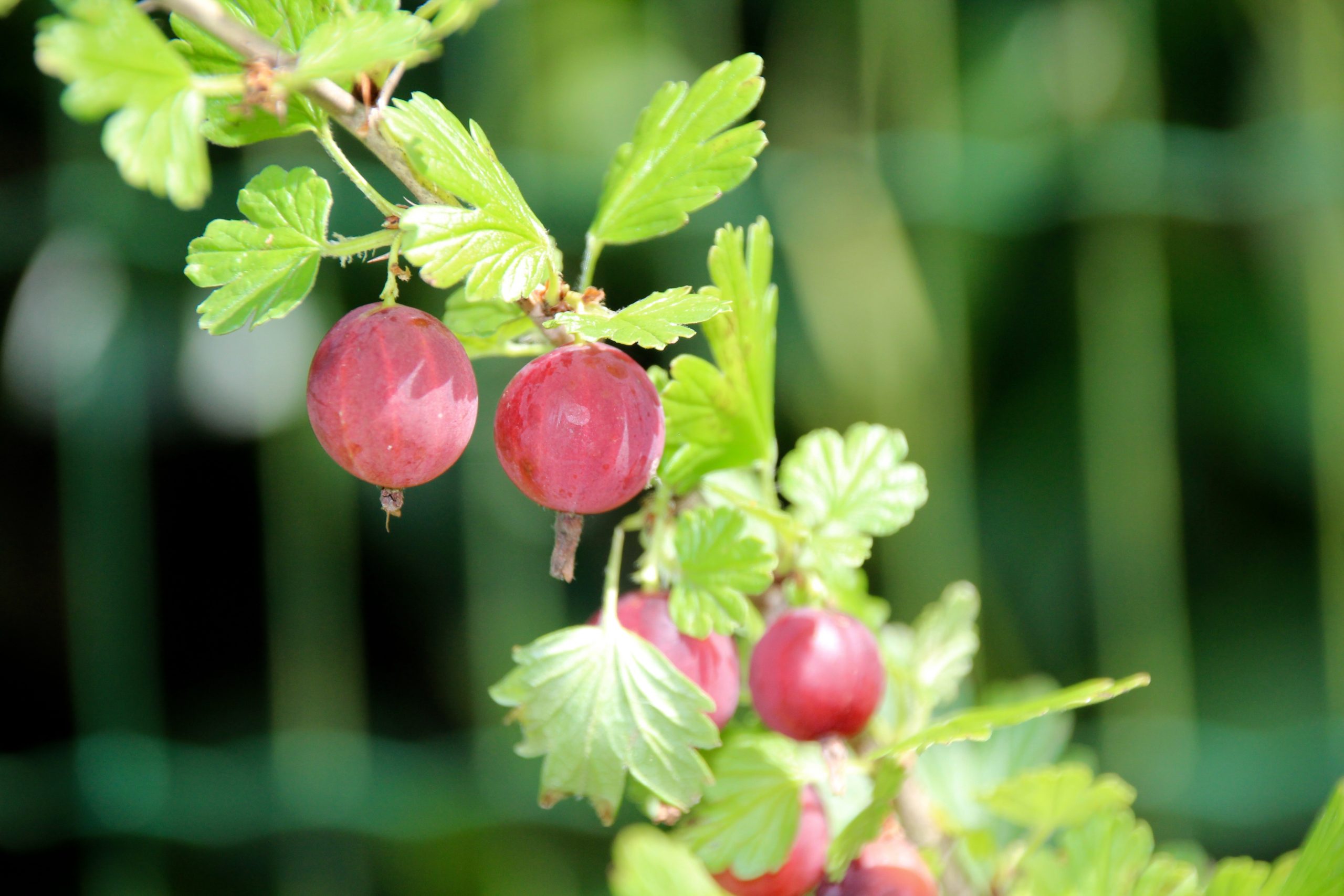
Ribes UvaCrispa Ricol Paysage Pépinières
1. ]. Stems with stout nodal spines, often also bristly; lvs to 6 cm wide; hypanthium broadly campanulate above the ovary, 3 mm long and wide, pubescent; sep pubescent, spreading or reflexed, round-obovate, 3.5-4 mm, longer than the hypanthium; pet 2-2.5 mm long and wide; stamens and style nearly or quite equaling the sep; fr pubescent and.

Ribes uvacrispa 'Gelbe Triumphbeere' Stock Image C013/1824 Science Photo Library
Ribes uva-crispa, commonly called gooseberry, is a deciduous, spiny shrub native to northern Africa and Europe. Mature plants can reach up to 5' tall with a similar spread and take on a rounded form with a scrambling habit. The leaves have three to five deep lobes.

Ribes uvacrispa BBC Gardeners World Magazine
Ribes uva-crispa L. European gooseberry. Data Source. Last Revised by: USDA NRCS National Plant Data Team. Curated and maintained by: USDA NRCS National Plant Data Team. Data Documentation. The PLANTS Database includes the following 32 data sources of Ribes uva-crispa L. - Showing 1 to 25.